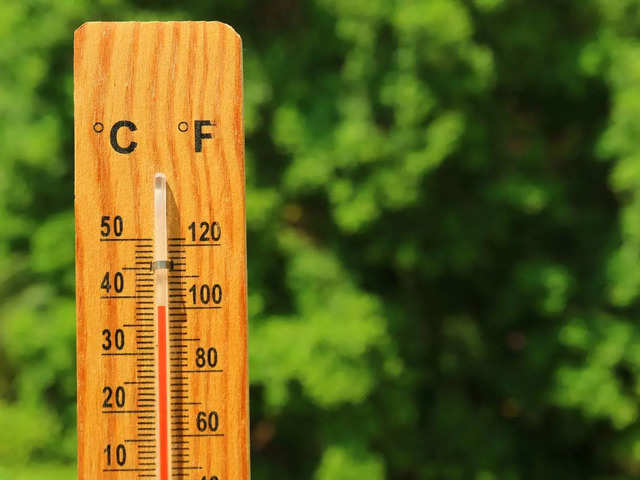
India has seen an increase in pet adoption in the pandemic, with demand for dogs, cats, and other furry friendUnsplash
Pet care brands in India increase their ad spends on digital media and TV
Oct 1, 2021, 11:30 IST
brands
As more people adopt furry companions in India, pet care brands are upping their marketing game and expanding their e-commerce presence to connect with consumers
Oct 1, 2021, 11:30 IST
Pet care brands in India increase their ad spends on digital media and TV
- The outbreak of coronavirus has affected our daily routines. To ease our loneliness and boredom, we have turned to our furry companions who emerged as the brightest ray of light in our lives in the past two years.
- As a result, India has seen an increase in pet adoption in the pandemic, with demand for dogs, cats, and other furry friends.
- We speak to leading pet care brands in India to find out how this surge in adoption has translated into increased demand for pet food and care after the pandemic, how brands are increasing their marketing spends to leverage this demand, and a few trends that we can expect to see in the category as we move forward.
As a result, India has seen an increase in pet adoption in the pandemic, with demand for dogs, cats and other furry friends as citizens looked for simple ways to ease loneliness and boredom.
As per latest data shared by Petex, India is the fastest-growing pet care market in the world. After seeing a push due to the pandemic, it is expected to grow at 14% annually to become a $490 million (₹33000 million) market by 2022 and Pet food market alone is projected to cross $310 million (₹20000 million) by 2022.

MARS Petcare currently generates $40 billion in annual sales globally and houses the biggest pet food and care brands like Whiskas, Pedigree, Royal Canin, Pet Partners, to mention a few, and has witnessed an upsurge in new customers after March 2020. In a Euromonitor research report from 2019, it was reported that MARS Petcare maintains its leadership through brand Pedigree in India.
Telling us how the market has changed lately, Ganesh Ramani, Managing Director,
Petcare brand Supertails, which caters to all pet care needs, saw an increase in demand for vet consultations. It is doing more than 2000 consultations every month.
Varun Sadana, Co-founder of Supertails, shared, “During the pandemic, people faced anxiety, depression, mental health issues and that was the period when pets played a crucial role in their life to get over the struggle. The pet adoption rate is above 10% with the GenZ contributing to the new pet parents population. At an overall level, the market has increased more than 20% CAGR in the last 2 years of the pandemic. Some brands like Purina have talked about 80%+ growth in the last year itself. Also, considering a large set of new pet parents are GenZ, there is a want of so much information and curiosity of being updated in pet parents. This is the first generation which is looking at pet parenthood rather than pet ownership. We expect the dog adoption rate to increase upwards of 15%.”
Heads Up For Tails has witnessed a surge in demand for pet food and pet care products like grooming products, toys, walk accessories. Egro, it has been focusing on casting a wider net to attract more consumers.
Rashi Sanon, Founder, Heads Up For Tails said, “We do have several new products planned to cater to customer demand. That being said, we also hope to expand our customer reach through new stores. Currently, we have 41 stores across the country, we have 8 more in the pipeline so we can connect with more pets and their families. Additionally, we’re focusing on building relevant content and an engaged community of pet people. We’re also keen on continuing product innovation alongside online growth and retail expansion.”
To leverage this demand, pet care brands are leaving no stone unturned to reach out to pet parents through engaging content. They have increased their focus on e-commerce channels to expand their digital ‘paw-print’ and are spending more on digital media and TV to connect with paw-some parents.
According to exclusive data shared by TAM AdEx with Ad and Media Insider, the animal feed category, which includes all kinds of animal food, saw an uptick in TV and digital spends. During July to September 2021, TV dominated the animal feed category in terms of ad insertions followed by digital and print.

TAM’s report further revealed that Pet Essentials, Mars International India and Hills Pet Nutrition were among the top three advertisers on digital media during April to June quarter of 2020 and 2021. Mars International also had a 29% share in print ads and 10% on TV from the overall animal feed sector in 2021.

Trends in Pet Care Category
Pet care brands told us that pet parents are now asking and Googling for the right food and nutrition and parenting techniques and doing a lot for their pet’s overall wellness.
“Pet parents are being more mindful of the kind of products they’re using for their pets. They’re asking more questions and learning more about the specific products and lifestyles their pets need. They’re certainly opting for products with more organic ingredients, products that are being made sustainably and so on,” said Sanon.
Wiggles.in's Founder and CEO, Anushka Iyer, told us that pet parents are also looking for plant-based options now.
"Wiggles.in predicts an upward surge in CBD-based products such as Pain Relief Therapy Oils and CBD infused treats to tackle pain management in senior pets since the global CBD pet products market is anticipated to witness a CAGR of 41.3% during the forecast period from 2021 to 2026. Immunity-boosting probiotic, gut-healthy strips that dissolve in the pet’s mouth are trending and disrupting the traditional pill-administering format, confirm veterinarians.
Pet grooming products that include probiotics are evolving into an upcoming segment. Since 20% of the population is vegetarian in India, pet parents are insisting on vegan or plant-based pet food for their pets. Mental health in pets is gaining prominence, hence anxiety training in pets especially curated for anxious pets is leading. Pet insurance and cashless hospitalization, when it comes to injuries or accidents in pets, is a new category that prominent finance houses are delving into," said Iyer. As per Ramani, a lot of metro pet parents have moved to their native cities taking their pet along or adopting a pet in their hometown, which contributes to the rest of urban and smaller towns growing faster. This has pushed pet care brands to focus more on strengthening their presence across the country through e-commerce channels.
“As a part of the changing buying behaviors observed during the pandemic, the brand also started distributing their products through grocery marketplaces like Amazon, Dunzo, Big Basket and Petshop online portals. While e-commerce continues to be a critical channel for the brand to bridge the distribution gap, Whiskas is also slowly expanding to new cities and markets across the country,” said he.
Listing a few other trends that he is expecting to see in the pet care category in near future, Ramani added, “1. Increase in ownership of cats, adoption of street cats & purchase of breed cats, 2. Increase in spends on MPF and additional discretionary spends on treats, 3. Significant increase in cat-friendly spaces, spa’s and other grooming products, and 4. Increase in activists supporting stray cats in terms of feeding, vaccinations, care, etc.
Pet care brands also changed their marketing strategy to connect with consumers. Some people have reservations about adopting cats due to negative associations or superstitions, especially when it comes to caring and nurturing felines. Whiskas’ launched a new campaign that aimed at educating cat parents to reinforce how cats are cute and curious, not with any of the vile, stereotypical and unfavorable qualities associated with them. Supertails, on the other hand, is now preparing for a campaign for world rabies day, considering India is the largest country affected by rabies.
As these newly-adopted pet babies during the pandemic grow bigger, their food requirements will also increase. Experts are, therefore, hoping to see a prolonged demand for pet adoption, food, care and nutrition and are looking at using the right marketing tools to further encourage pet adoption and the right amount of care.
INSIDER INTELLIGENCE REPORTS







